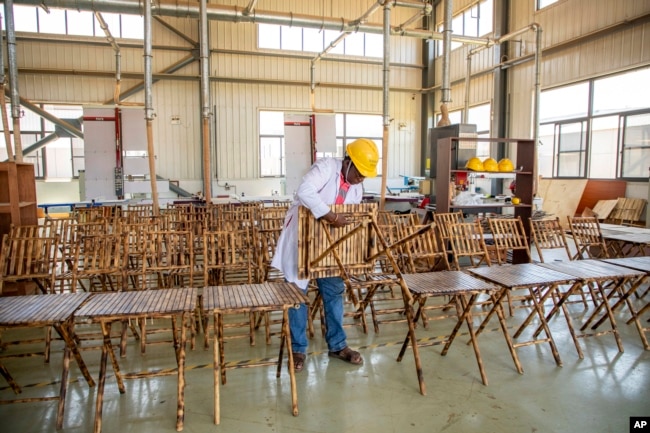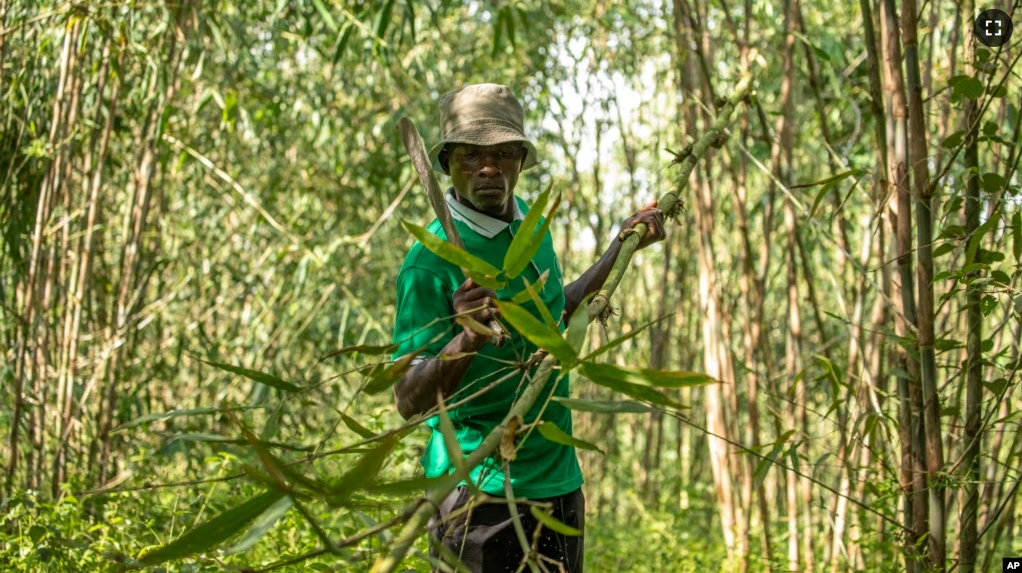Bamboo farming is on the rise in Uganda. The strong and fast-growing crop is seen by the East African government as having real growth possibility.
Along a 3-kilometer stretch of the river Rwizi, environment protection officers recently planted new bamboo seedlings and cleared room for last year’s survivors to grow.
The river Rwizi is the most important river in western Uganda that includes the major city of Mbarara. A successful bamboo forest would protect the river against sand miners, farmers and others whose activities have long threatened it.
The National Environment Management Authority estimates that the Rwizi has lost 60 percent of its water collection area over many years. In some areas the river runs as narrow as a stream.
“Once bamboo is established, it is almost like a net,” said Jeconious Musingwire. He is an environment officer who was the project’s technical advisor. “The roots trap everything, including the surface runoff, and stabilize the weaknesses of the banks.”
In Uganda, bamboo can be burned for fuel in rural communities, taking pressure off shrinking forests of eucalyptus and other natural resources. It is a strong plant that can grow almost anywhere. And businesses can turn it into products ranging from furniture to toothpicks.

Some of the bamboo species grown in Uganda are imported from Asia. But many grow wild. One kind has shoots that are smoked and then boiled to make a popular traditional meal in eastern Uganda.
The Ugandan government has set a 10-year policy that calls for planting 300,000 hectares of bamboo. Most of it will be grown on private land by 2029 as part of wider reforestation efforts.
That is a high target. The Uganda Bamboo Association, the largest such group with 340 members, has planted only 500 hectares. Even with growing interest in bamboo farming, officials will have to push more farmers in rural parts of Uganda to plant large areas of land with bamboo.
A single bamboo pole brings in a little less than a dollar, so farmers need to grow a lot to earn enough. Bamboo promoters are urging them to see a bamboo plantation as the same kind of money-making crop as coffee or tea. Banks are offering bamboo “plantation capital” loans that promise ownership of large forests of bamboo.
Bamboo plants are normally ready for harvesting in three to five years. A well-maintained plantation can be useful for at least 50 years, said Jacob Ogola, a crop production expert working with the large Kitara Farm. He said bamboo is easy to manage, and usually does not need spraying for pests.
Still, Uganda’s bamboo plantations are not growing fast enough to build an industry around the plant.
Steve Tusiime owns a bamboo nursery. It has sold fewer than 10,000 seedlings in the past two years. But, Tusiime said, “Bamboo is going to be a game changer in Africa. You can eat bamboo, you can use it to build, you can create an industry for bamboo, you can feed it to your animals, and it can take care of your land.”
I’m Dan Novak.
Dan Novak adapted this story for VOA Learning English based on reporting by The Associated Press.
_________________________________________________
Words in This Story
seedling — n. a young plant that is grown from seed
stream — n. a natural flow of water that is smaller than a rive
stabilize — v. to make something steady
species — n. a group of animals or plants that are similar and can produce young animals or plants
capital — n. money, property, etc., that is used to start or operate a business
pest — n. an animal or insect that causes problems for people especially by damaging crops
game changer — n. something such as a product or event that affects a situation or area of business very much
